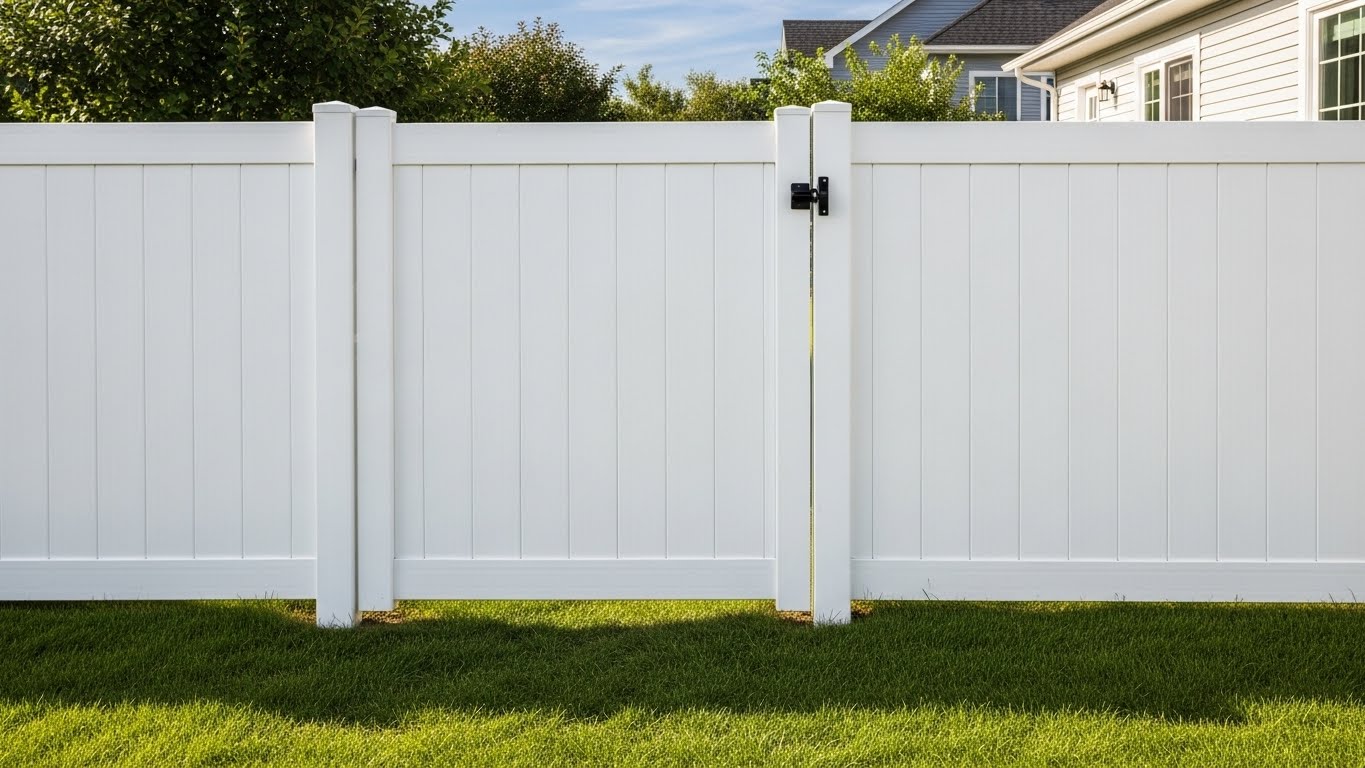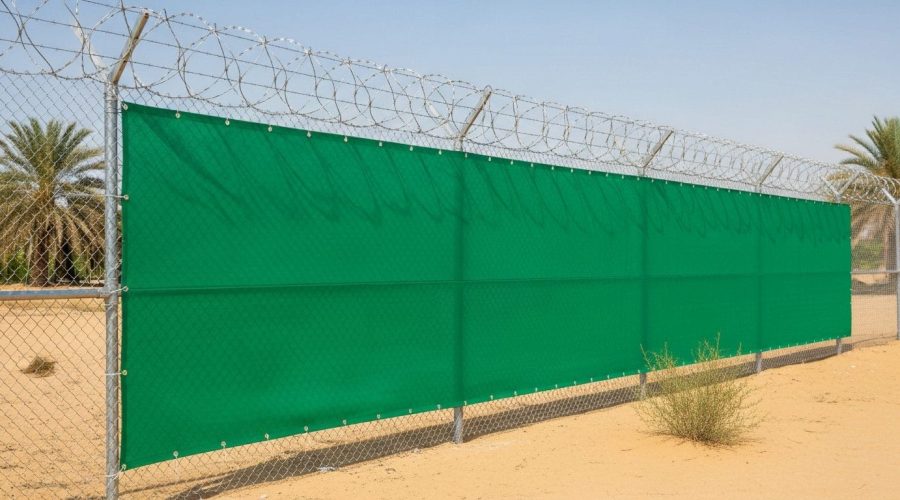
The security of government and military installations in the UAE requires sophisticated perimeter protection systems that can withstand both conventional and modern threats. High-security fencing serves as the first line of defense for these critical facilities, providing robust barriers that protect sensitive operations, personnel, and equipment from unauthorized access.
Military fencing UAE installations must meet stringent security standards while adapting to the region’s unique environmental challenges. From extreme temperatures to sandstorms, these specialized security systems must maintain their integrity under harsh desert conditions. The selection and implementation of appropriate high-security fencing UAE solutions directly impacts the operational security of defense facilities across the Emirates.
Modern threats to military installations have evolved beyond traditional perimeter breaches. Electronic warfare, surveillance attempts, and sophisticated infiltration techniques require equally advanced defensive measures. High-security fencing systems now integrate multiple technologies to create comprehensive security barriers that detect, deter, and delay potential intrusions.

UAE military installations face distinct security challenges that influence fencing requirements. Desert environments expose perimeter barriers to extreme temperature variations, ranging from scorching daytime heat exceeding 50°C to significant nighttime cooling. These temperature fluctuations stress metal components, potentially compromising structural integrity over time.
Sand infiltration presents another persistent challenge. Fine desert particles can clog mechanical systems, obscure sensors, and gradually weaken fence foundations. Army base fencing UAE solutions must incorporate design features that prevent sand accumulation while maintaining operational effectiveness.
Visibility concerns also impact security planning. The flat desert terrain surrounding many installations provides excellent sight lines for surveillance but also creates challenges for concealing security measures. Effective military fencing must balance transparency for internal monitoring with opacity to prevent external reconnaissance.
Rapid urban development near military zones introduces additional complications. Civilian construction activities, increased traffic, and proximity to populated areas require fencing systems that clearly delineate secure boundaries while managing public safety concerns.
High-security fencing serves multiple strategic functions beyond basic perimeter definition. These systems create controlled access points that channel all entry through designated checkpoints, enabling comprehensive monitoring and screening procedures. This controlled access capability is essential for maintaining accountability and preventing unauthorized intrusions.
Detection integration capabilities distinguish high-security systems from standard barriers. Advanced fencing incorporates sensors, cameras, and monitoring systems that provide real-time alerts about potential breaches. This integration creates an active security perimeter rather than a passive barrier.
Deterrent value represents another crucial function. Visible high-security fencing signals to potential threats that the facility maintains robust defensive measures. This psychological deterrent frequently inhibits reconnaissance efforts and opportunistic invasions prior to their occurrence.
The delay function of security fencing provides critical response time for security personnel. High-quality barriers significantly slow breach attempts, allowing adequate time for detection systems to alert guards and for response teams to deploy effectively.
Military airfields require specialized fencing solutions that accommodate aircraft operations while maintaining security protocols. These installations utilize high-security fencing UAE systems with specific height requirements, typically exceeding 4 meters, to prevent unauthorized access to runways and aircraft parking areas.
Naval facilities present unique challenges due to waterfront locations. Fencing systems need to switch easily from land-based barriers to water-based security measures. This generally includes unique marine barriers and underwater detecting systems.
Command and control centers housing sensitive communications equipment require the highest security classifications. These facilities employ multiple fencing perimeters with varying security levels, creating layered defense systems that provide redundant protection.
Training facilities and weapons storage areas each require customized security approaches. Training areas need flexible access controls to accommodate varying exercise schedules, while weapons storage demands maximum security with minimal access points and comprehensive monitoring coverage.
The material specifications emphasize the durability and strength of military-grade fencing. High-tensile steel construction provides excellent resistance to cutting and climbing attempts while maintaining structural stability under extreme weather conditions. Galvanized and powder-coated finishes protect against corrosion in desert environments.
Height specifications typically range from 3 to 6 meters, depending on security classifications and threat assessments. Additional height extensions using razor wire or electric deterrents can increase effective barrier height without compromising structural integrity.
Mesh patterns vary according to security requirements. Anti-climb designs feature small mesh openings that prevent toe and finger holds, while maintaining visibility for surveillance purposes. Reinforced connection points ensure mesh-to-post integrity under stress conditions.
Foundation systems anchor fencing securely in sandy soils common throughout the UAE. Deep concrete footings and specialized anchoring systems prevent undermining attempts while providing stable support for tall barrier sections.
Operational security improvements directly impact mission effectiveness. Secure perimeters allow personnel to focus on primary duties rather than constant vigilance for potential threats. This security assurance enables more efficient operations and better resource allocation.
Cost-effectiveness emerges through reduced security personnel requirements. Well-designed fencing systems decrease the need for continuous human monitoring of perimeter areas, allowing security staff to concentrate on high-priority locations and activities.
Compliance benefits help facilities follow the rules and requirements for security around the world. Many military partnerships and hosting agreements require specific security certifications that depend on adequate perimeter protection measures.
Insurance and liability protections provide financial benefits through reduced premiums and coverage exclusions. Documented security measures, including certified fencing systems, often result in more favorable insurance terms for government facilities.
Integration with electronic security systems creates comprehensive protection networks. Modern army base fencing UAE installations incorporate fiber optic sensors, infrared detectors, and seismic monitoring devices that provide detailed threat intelligence and precise intrusion location data.
Access control integration enables sophisticated entry management. Electronic gates, card readers, and biometric systems work in conjunction with fencing to create secure entry points that maintain detailed access logs and prevent unauthorized entry attempts.
Emergency response coordination relies on properly designed fencing systems. Emergency vehicle access points, evacuation routes, and firefighting equipment positioning all depend on strategic fencing placement that balances security needs with safety requirements.
Maintenance accessibility ensures long-term effectiveness. Security fences for military bases must provide maintenance access while preserving security integrity, requiring careful design of service points and equipment placement.
Sensor integration capabilities distinguish military-grade systems from commercial alternatives. Vibration sensors detect climbing or cutting attempts, while thermal imaging systems identify approach patterns during low-visibility conditions. These integrated systems provide comprehensive threat detection across all environmental conditions.
Modular construction allows rapid deployment and reconfiguration as security needs evolve. Standardized components enable quick repairs and modifications without compromising overall system integrity or requiring specialized tools and equipment.
Weather resistance specifications address UAE’s challenging climate conditions. UV-resistant materials prevent degradation from intense solar exposure, while corrosion-resistant coatings protect against humidity and salt air in coastal areas.
Camouflage and concealment options help blend security measures with surrounding environments. Earth-tone finishes and vegetation screening can reduce visual impact while maintaining security effectiveness.
What height requirements apply to military fencing in the UAE?
Military fencing typically requires minimum heights of 3-4 meters, with many installations utilizing 5-6 meter barriers for enhanced security. Height specifications depend on facility classification levels and specific threat assessments conducted by security professionals.
How do high-security fences perform in desert sandstorms?
Quality military fencing systems have architectural characteristics that keep sand from building up and keep the structure strong even in bad weather. Sloped foundations, drainage systems, and corrosion-resistant materials ensure continued effectiveness despite harsh environmental conditions.
What maintenance schedules do military fences require?
Professional maintenance schedules typically include quarterly inspections, annual component testing, and immediate repairs for any damage or wear indicators. Preventive maintenance programs help ensure continuous security coverage and extend system lifespan.
Can existing perimeter fences be upgraded to military standards?
Many existing installations can be upgraded through height extensions, sensor integration, and reinforcement modifications. Professional security assessments determine upgrade feasibility and recommend specific improvements needed to meet military security standards.
The strategic importance of robust perimeter security for UAE military installations cannot be overstated. High-security fencing systems provide essential protection that enables effective defense operations while meeting international security standards. These sophisticated barriers represent critical infrastructure investments that protect both personnel and national security interests.
Quality UAE defense perimeter fencing solutions require professional assessment, proper installation, and ongoing maintenance to ensure continued effectiveness. Military facility managers should partner with experienced security contractors who understand both regional environmental challenges and evolving security threats.
For comprehensive security fencing solutions that meet military specifications and UAE environmental requirements, consult with certified security professionals who specialize in defense installations. Proper perimeter protection forms the foundation of effective military facility security, making expert guidance essential for mission success.